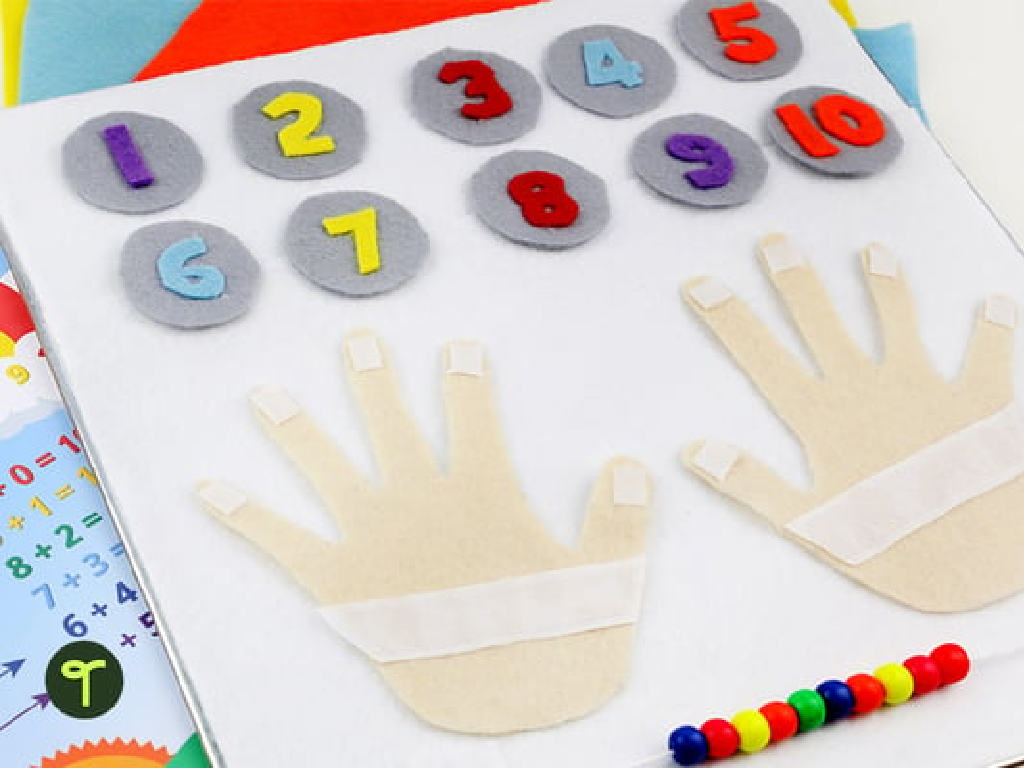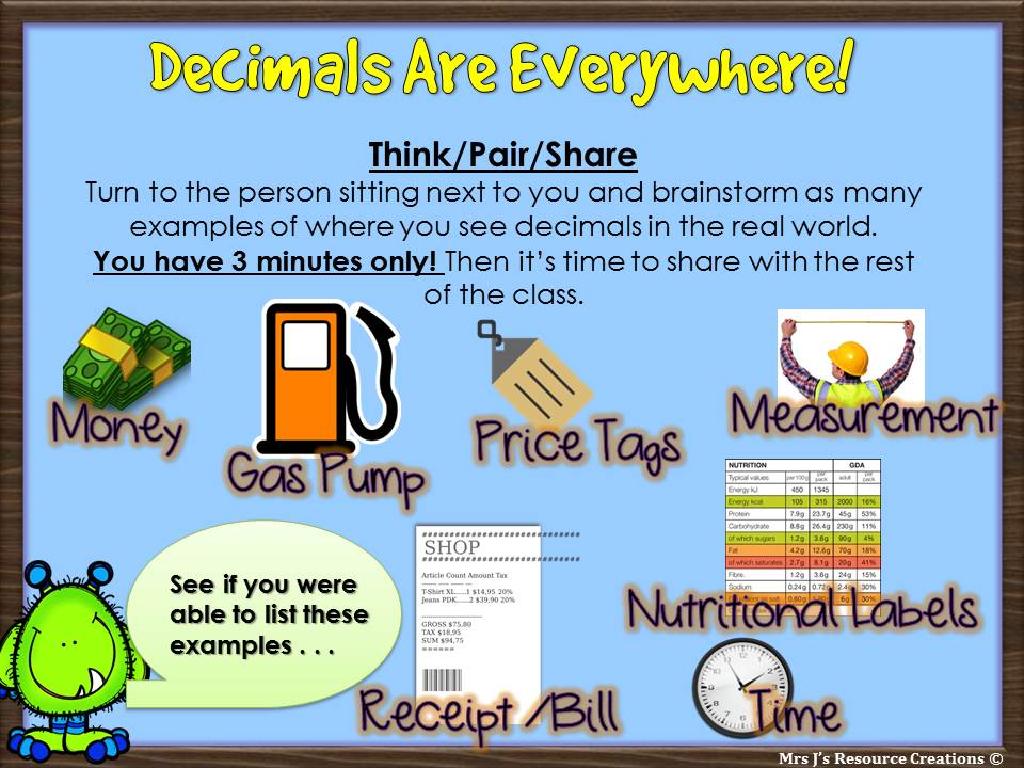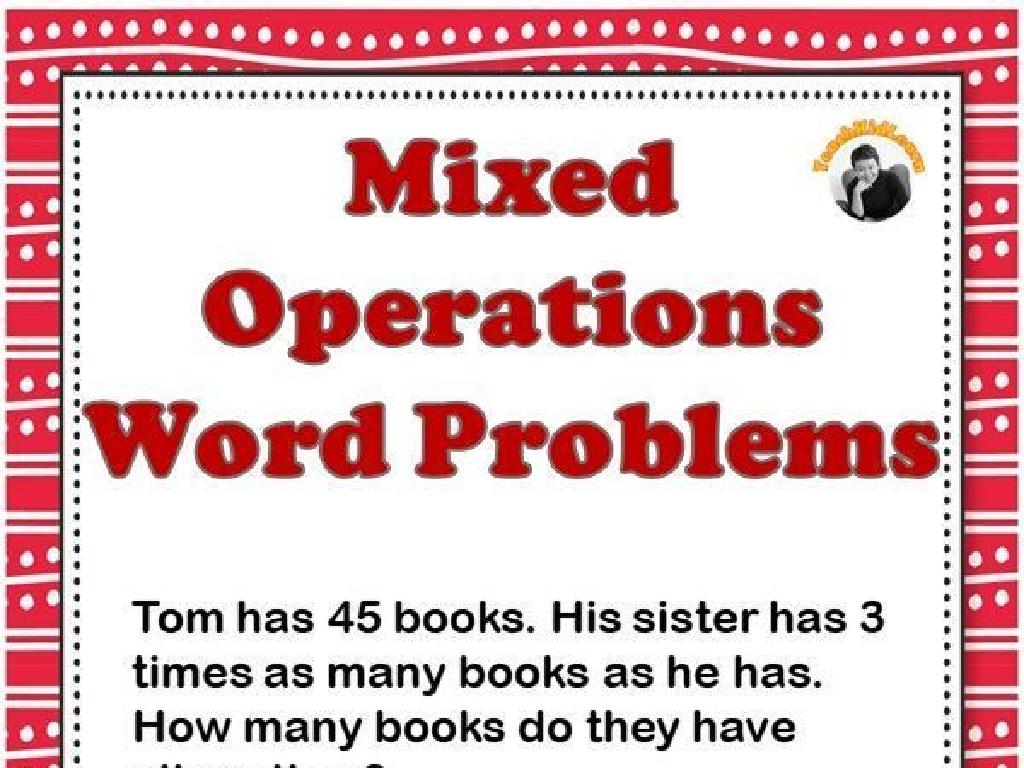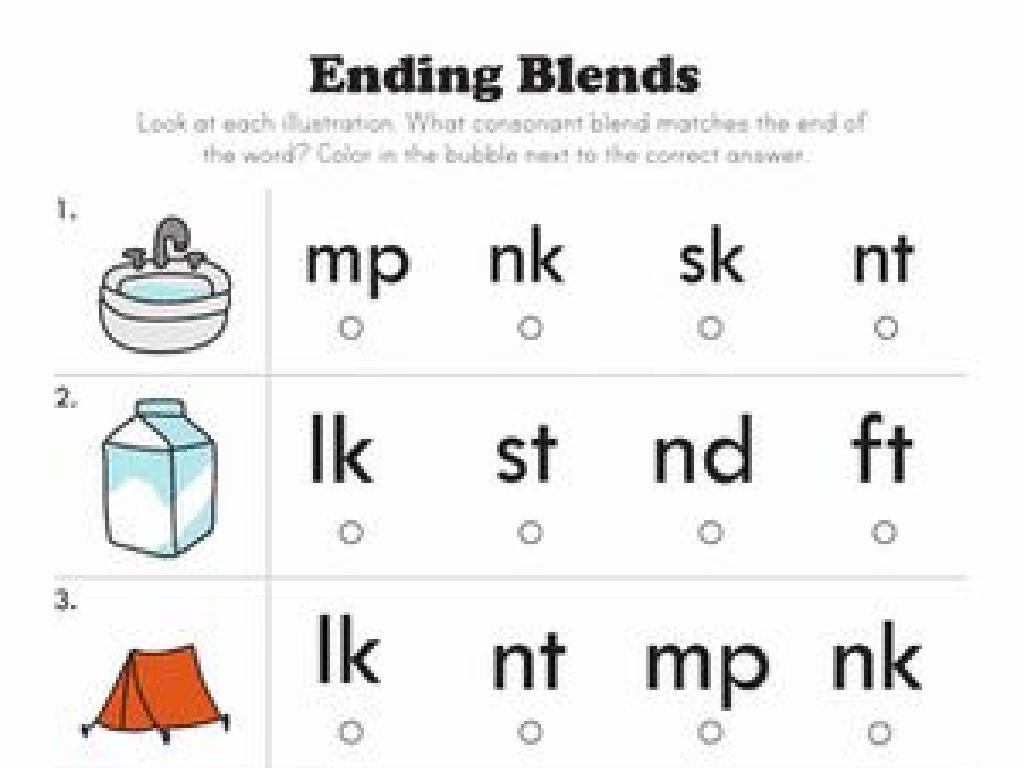Complete The Subtraction Sentence - Up To 10
Subject: Math
Grade: First grade
Topic: Complete The Equation
Summary: Introduce your first graders to completing subtraction sentences up to 10 with engaging, hands-on practice. This lesson uses relatable examples, such as apples and real-life objects, to visualize taking away and understanding what remains. Through interactive activities like object counting, fill-in-the-blank problems, and Subtraction Bingo, students gain confidence in finding missing numbers and mastering subtraction concepts in a fun, supportive environment. Perfect for building foundational math skills.
Please LOG IN to download the presentation. Access is available to registered users only.
View More Content
Welcome to Subtraction!
– Learning to take away numbers
– Subtraction shows how many left
– If you have 5 apples and eat 2, subtraction tells you 3 are left.
– Practice with numbers up to 10
– Fun subtraction activities
– We’ll use toys and drawings to learn!
|
This slide introduces first graders to the concept of subtraction as a means of determining how many items remain after some have been taken away. Emphasize that subtraction is simply ‘taking away’ and can be visualized with physical objects, which is helpful at this learning stage. Use relatable examples, such as apples or toys, to illustrate the concept. During the lesson, engage the students with hands-on activities where they can practice subtracting numbers from 1 to 10 using classroom objects or illustrations. This will help them understand the practical application of subtraction in everyday life. Encourage participation and praise their efforts to build confidence.
Understanding Subtraction: Apples Example
– Subtraction means taking away
– Start with 10 apples
– Imagine having a full basket of 10 apples
– Give some apples away
– If you give 2 apples to a friend, how many do you have now?
– How many are left?
– Count the remaining apples to find out
|
This slide introduces the concept of subtraction to first graders using a relatable example of apples. Subtraction is explained as the process of taking away from a total amount. Start with a scenario where students have 10 apples, and they give some away, prompting them to think about how many apples they would have left. This tangible example helps them visualize the subtraction process. Encourage the students to use their fingers or physical objects to count and subtract. The goal is to make them comfortable with the idea of ‘less than’ and to understand that subtraction gives us the number that remains.
Understanding Subtraction Sentences
– Subtraction sentence parts
– A subtraction sentence is like a story with a beginning, middle, and end.
– Minuend – Subtrahend = Difference
– The minuend is what you start with, the subtrahend is what you take away.
– Example: 10 – 3 = 7
– In our example, 10 is what we start with, we take away 3, and we have 7 left.
– Practice with numbers up to 10
– Let’s try some together! How about 8 – 5 or 6 – 2?
|
This slide introduces the concept of subtraction sentences to first graders. Begin by explaining that a subtraction sentence is made up of three parts: the minuend (what you start with), the subtrahend (what you take away), and the difference (what you have left). Use simple examples with numbers up to 10 to illustrate this concept. Encourage students to visualize the process, perhaps using objects or their fingers to physically represent the subtraction. After explaining with the example provided, engage the students in creating their own subtraction sentences using numbers up to 10. This will help solidify their understanding and prepare them for practice problems.
Let’s Practice Subtraction Together!
– Look at the subtraction sentence
– Find the missing number
– Understand the subtraction concept
– Subtraction means taking away from a total
– Example: 8 – ___ = 5
– What number do we subtract from 8 to get 5?
|
This slide is designed to engage first-grade students in a subtraction activity. Start by showing them a subtraction sentence with a missing number and ask them to find the missing number. This will help them understand the concept of subtraction as ‘taking away’. Use simple examples where the result is less than 10 to ensure the concept is clear and easy to grasp. For the given example, guide the students to understand that if we have 8 and we take away some amount to end up with 5, they need to figure out what that amount is. Encourage them to use their fingers or objects to count backwards from 8 to 5, which will help them find the missing number, 3. Prepare to have several similar examples and use objects like counters or drawings to visually represent the subtraction process.
Using Objects to Subtract
– Use objects to learn subtraction
– Blocks or fingers can represent numbers
– Example: 7 blocks minus 2 blocks
– Start with 7 blocks, take 2 away, how many left?
– Count what’s left for the answer
– After removing 2, count the blocks remaining
– Practice with different numbers
|
This slide introduces the concept of subtraction by using tangible objects such as blocks or fingers, which helps first graders visualize the process. Start by explaining that subtraction means taking away. Show them how to physically remove objects and then count what’s left to find the answer. Use the example provided to demonstrate the concept, and then encourage students to practice with different numbers up to 10. This hands-on activity will help solidify their understanding of basic subtraction. For the class activity, provide various sets of objects and have students practice subtracting different amounts, ensuring they grasp the concept of ‘taking away’ and ‘how many are left’.
Complete the Subtraction Sentence
– Time to solve subtraction problems
– Use fingers or objects for help
– If 5 – 2, hold up 5 fingers and put 2 down
– Count carefully to find answers
– Double-check by counting remaining fingers
– Practice makes perfect
|
This slide is an interactive activity for first graders to practice completing subtraction sentences up to 10. Encourage the students to use their fingers, drawings, or classroom objects to visually represent the subtraction problems. Remind them to count carefully to ensure accuracy. This hands-on approach helps solidify their understanding of subtraction as ‘taking away’. As they work through the problems, circulate the room to offer guidance and support. Consider pairing students up for peer learning. After the activity, review the problems as a class and reinforce the concept that practice is key to mastering subtraction.
Class Activity: Subtraction Bingo
– Let’s play Subtraction Bingo!
– Complete subtraction sentences
– Use numbers up to 10 to find the difference
– Mark answers on your bingo card
– Each correct answer gets you closer to bingo
– Aim for five in a row to win!
|
This interactive activity is designed to help first graders practice and reinforce their subtraction skills in a fun and engaging way. Provide each student with a bingo card that has a variety of answers to subtraction problems up to 10. As you call out different subtraction sentences, students will solve them and mark off the corresponding answers on their cards. The goal is to get five correct answers in a row, either horizontally, vertically, or diagonally. Prepare several rounds of the game and ensure to rotate the subtraction sentences to cover a range of difficulties. Offer small rewards to winners to encourage participation. This activity not only helps with math skills but also promotes attention and quick thinking.





